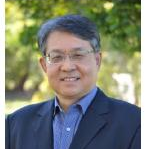Mathematics Education in Science, Technology and Engineering: Exploring Research and Scholarship of the Student and Staff Experience
A special issue of Mathematics (ISSN 2227-7390). This special issue belongs to the section "Engineering Mathematics".
Deadline for manuscript submissions: closed (31 May 2021) | Viewed by 20478
Special Issue Editors
Interests: mathematics education; computational intelligence; data mining; modelling and simulation; geophysics
Special Issues, Collections and Topics in MDPI journals
Special Issue Information
Dear Colleagues,
Mathematics is a core element within most educational programs in science, technology, and engineering around the world. This includes what is termed as “service teaching” within secondary and tertiary education sectors.
The learning and teaching of mathematics has suffered from an image problem with students and some staff. Many students exhibit low levels of engagement and interest towards learning mathematics. Some staff fail to see the value in fully committing to service teaching as an activity. The focus of this Special Issue is on exploring and illuminating the student and staff experience of the learning and teaching mathematics within STEM. This includes the learning and teaching of mathematics as a service subject for other disciplines, such as physics, engineering, biological sciences, and so on.
Potential topics include, but are not limited to:
- Mathematical curricula in science, technology and engineering programs;
- New or alternative perspectives and techniques of teaching mathematics;
- Authentic assessment and activities;
- Collaborative problem-based teaching and learning;
- Equitable teaching for students in diverse learning environments;
- Engagement among secondary schools, universities, and local communities to increase STEM participation.
Prof. Dr. William Guo
Prof. Dr. Christopher C. Tisdell
Guest Editors
Manuscript Submission Information
Manuscripts should be submitted online at www.mdpi.com by registering and logging in to this website. Once you are registered, click here to go to the submission form. Manuscripts can be submitted until the deadline. All submissions that pass pre-check are peer-reviewed. Accepted papers will be published continuously in the journal (as soon as accepted) and will be listed together on the special issue website. Research articles, review articles as well as short communications are invited. For planned papers, a title and short abstract (about 100 words) can be sent to the Editorial Office for announcement on this website.
Submitted manuscripts should not have been published previously, nor be under consideration for publication elsewhere (except conference proceedings papers). All manuscripts are thoroughly refereed through a single-blind peer-review process. A guide for authors and other relevant information for submission of manuscripts is available on the Instructions for Authors page. Mathematics is an international peer-reviewed open access semimonthly journal published by MDPI.
Please visit the Instructions for Authors page before submitting a manuscript. The Article Processing Charge (APC) for publication in this open access journal is 2600 CHF (Swiss Francs). Submitted papers should be well formatted and use good English. Authors may use MDPI's English editing service prior to publication or during author revisions.






